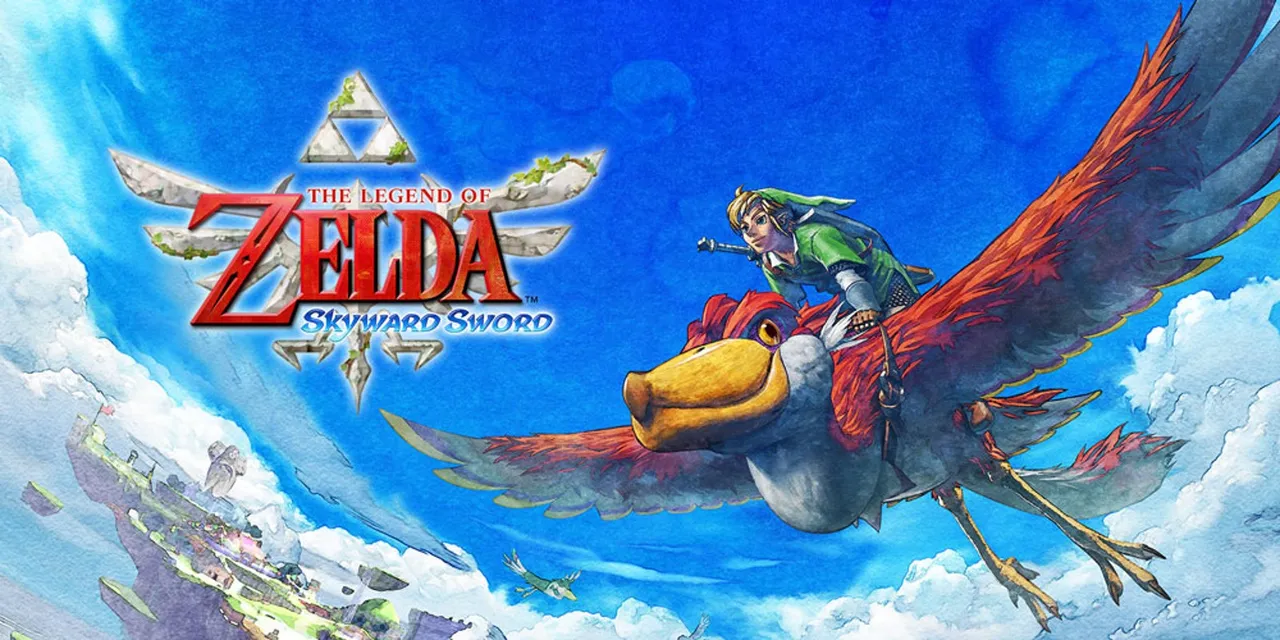
The most complex and atypical Zelda to date
If there is someone to thank for all the vision that The Legend Of Zelda has had in the contemporary era is Eiji Aonuma standing as creative director and recurring producer of the saga in each of the deliveries since Ocarina Of Time, considered the successor of Miyamoto I think that each of the deliveries he directs until Breath Of The Wild are an assured masterpiece worthy of the Olympus of videogame, but there is one that I think stands out not only for being a perfect conclusion point for a great console like the Wii but as a turning point in the mechanics of the games of the saga in 3D, and is that from Skyward Sword Aounuma's team would not consider another game until much later, considering this last installment on Wii as the highest point of the entire saga and one of my favorite installments of the console.
Skyward Sword is a rounded title, it takes many of the teachings left by Twillight Princess and begins as every game in the series, the proposal of the adventure in search of saving in this case our childhood friend guides us first through the city of the skies Altarea, a sacred corner for those lucky enough to live in it, but for us it is only the first step to explore the lower lands and to face several obstacles, the narrative here is surprisingly well focused on how the Triforce emerges as the balance between worlds, even with Link being the same character as always has a silent development but that makes it part of the story more significantly, in Nintendo do not usually give too much importance to the story that tells the saga so they are more than safe telling an innocent adventure between good and evil but adding nuances and interesting messages at every step.
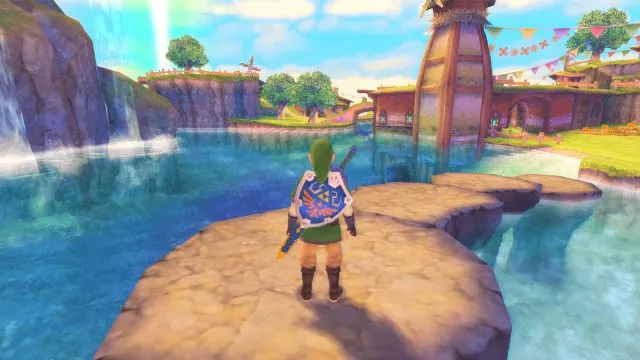

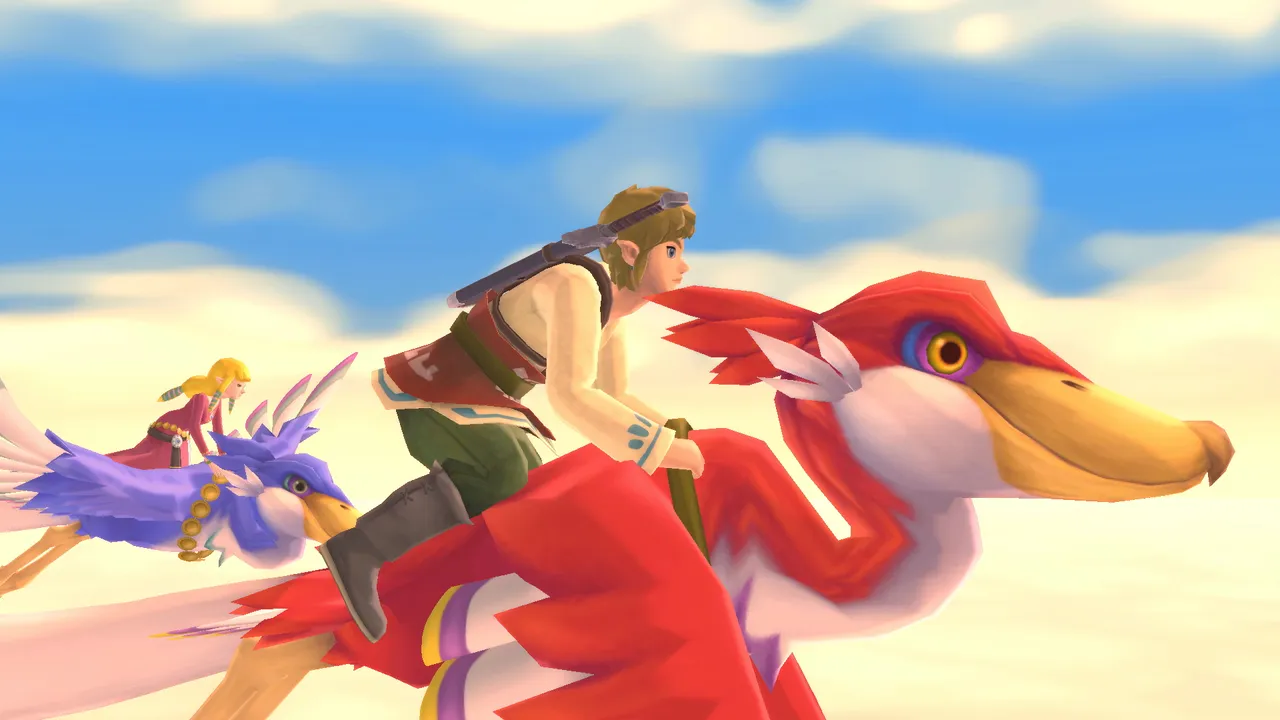
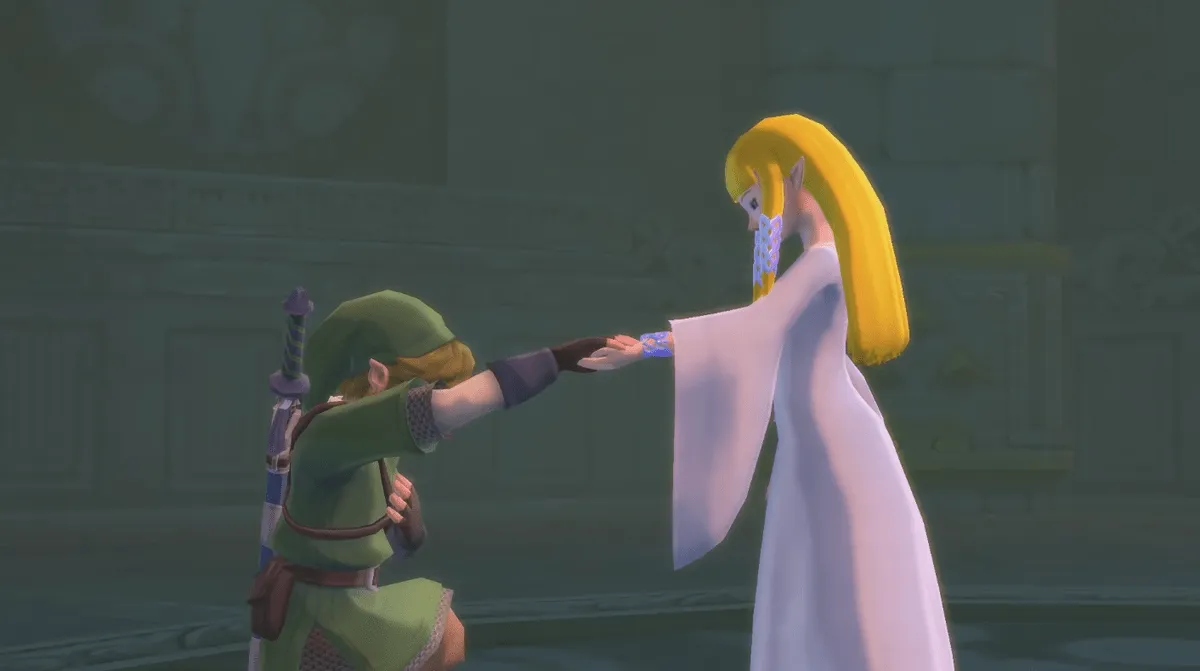
As for gameplay, here I can say that they took a leap that many did not expect closing a bit the cycle of open worlds in the series and betting on a more central structure that introduces Eiji Aonuma to a much more atypical adventure than any of its predecessors with its portals that allow us to travel between the two interconnected areas of the game, heaven and earth although they may not look anything like the classic fields of Hyrule yes it does a great job in giving us areas where we can explore at will, They work as a mini open world for us where we will have different areas to explore in Altarea as well as the classic scenarios of the saga and Earth (volcanic mountains, extensive forests and deserts) in which we will have to be returning often in the game, in this way the game ends with the classic displacement of the previous game and proposes a much more linear Zelda and to the point of the matter.
Something that I really liked about this game is the inclusion of our "assistant" Fay that although it makes me noise when compared to the charismatic Midna of the previous game I think I've come to grab more affection for each game I play because it can be a very subtle character by the way she expresses herself to give us clues about a puzzle in which we are stuck or to simply comment on the mission in which we are or our goals, Fay seems more like an artificial intelligence at certain points but is much more useful when it comes to solving problems that we can't like tracking objects with her tracking function by pointing our sword.

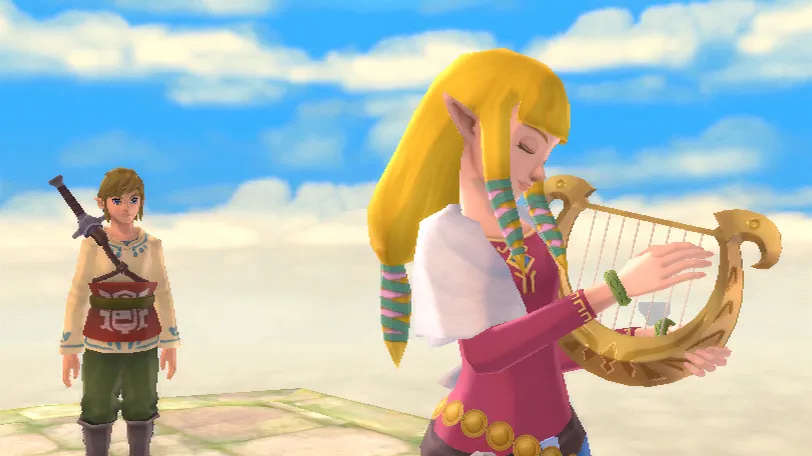
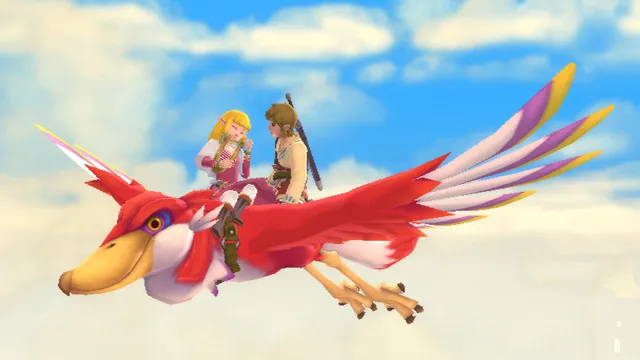
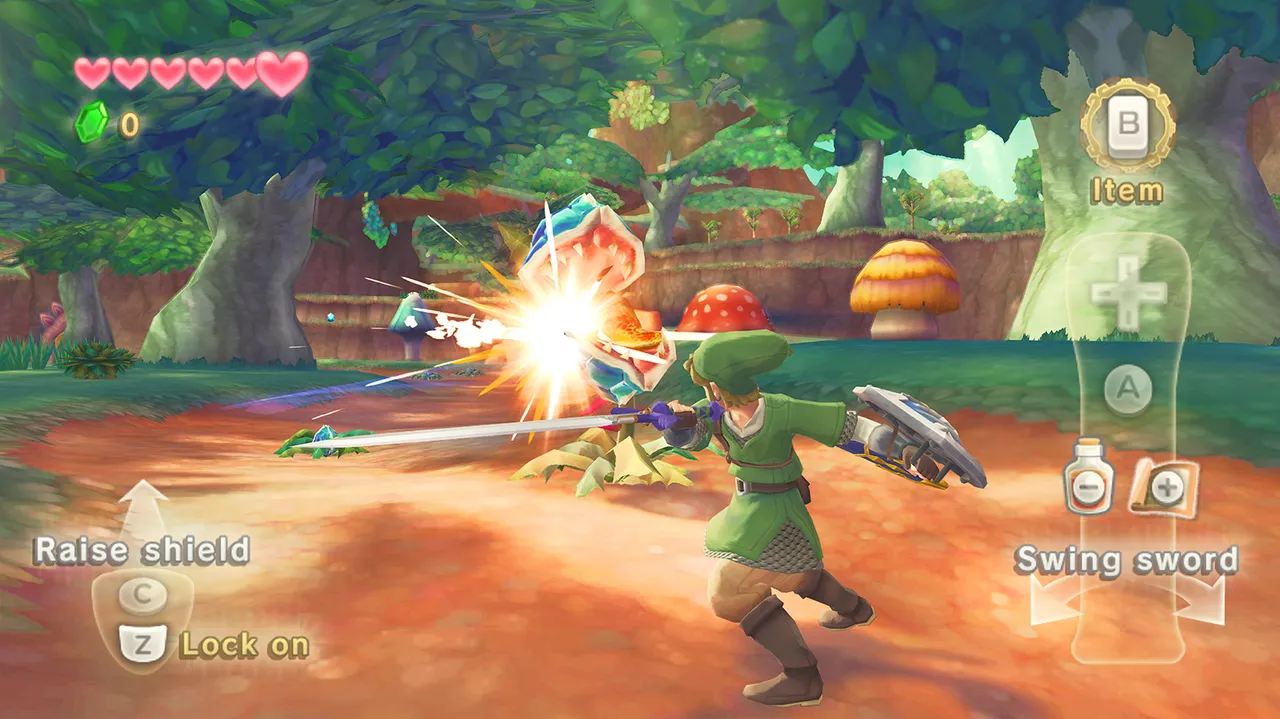
What I think is one of the most solid and innovative mechanics of this game is how it treats its combat system, streamlining Link completely in each of its actions thanks also to what was then a tool like the Wii Motion Plus capable of increasing the accuracy of our movements, although the aesthetics and mechanics are still similar here we put new ways to interact with our objects without having to pause the game, New combos and attacks that we can perform with certain weapons later in the game and above all more aggressive enemies, so much so that we will have more hearts at the beginning of the game to compensate, also the automatic fixation with long-range weapons are conspicuous by their absence and make way for us with our eyes we can aim in any situation thanks to Motion Plus.
Something that is clear to me is that the difficulty in this Zelda is more visible, some areas have formidable enemies that will take time to find a weak point and although Link is more skilled with the sword all depends on our ability with the controls to deal with them, the dungeons also increase both its presence and its difficulty first emphasizing how difficult it is to enter each of these areas (usually need a key that can be found in each of the areas, forest, volcano, desert) and also stand out for the complexity of their puzzles once inside, no doubt we were facing one of the games of the saga better built and more complex, offering a different formula to the usual, with enemies and more challenging problems but maintaining the essence.
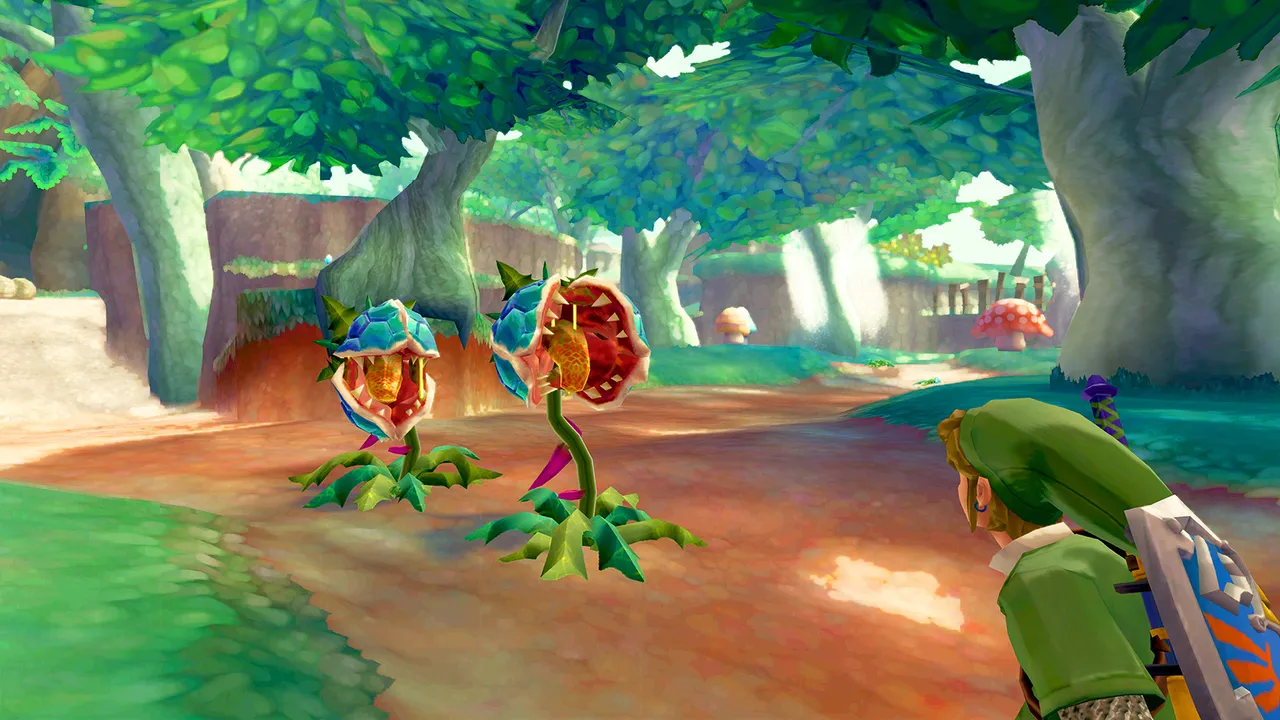

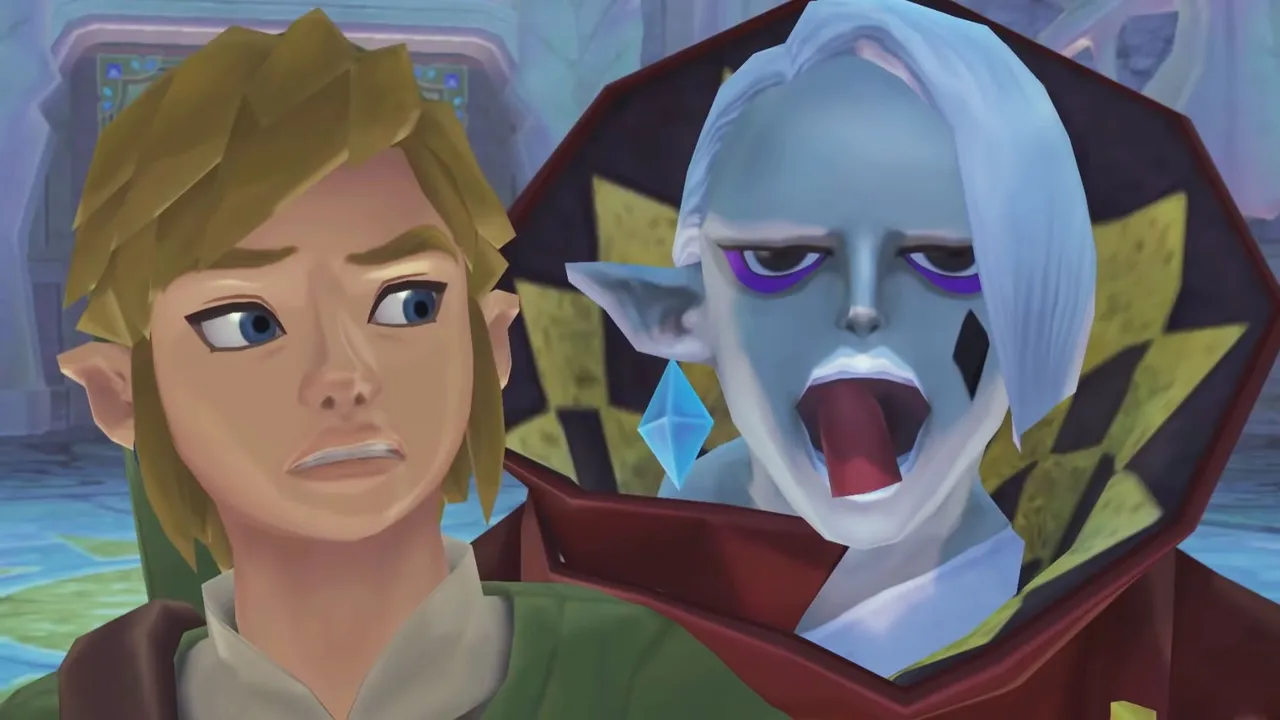

Skyward Sword is an elite product of Nintendo that aims to take to the maximum the capabilities of the Wii in the final stretch of his time, is a title that although it is not leading in the graphic takes advantage of taking us to landscapes with excellent execution and a more agile and complex gameplay, perhaps many put aside another great game like Twillight Princess but I think this last installment of the Wii era shines for being one of the last forays into consoles of the saga until its rebirth in Breath Of The Wild (next review), it is an ingenious title and that changes much of the formula of other games in their favor.
Image Source
1 . 2 . 3 . 4 . 5 . 6 . 7 . 8 . 9 . 10 . 11 . 12